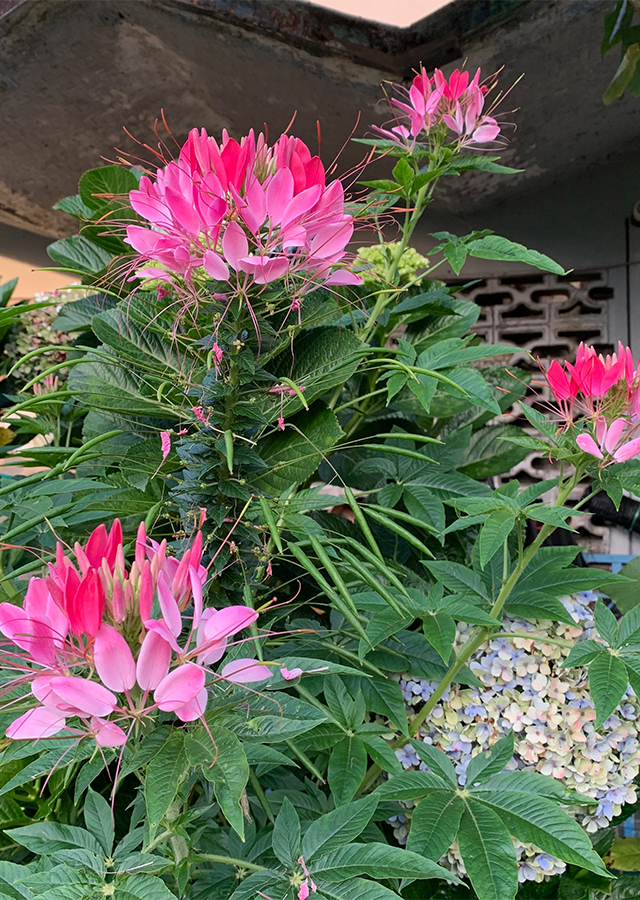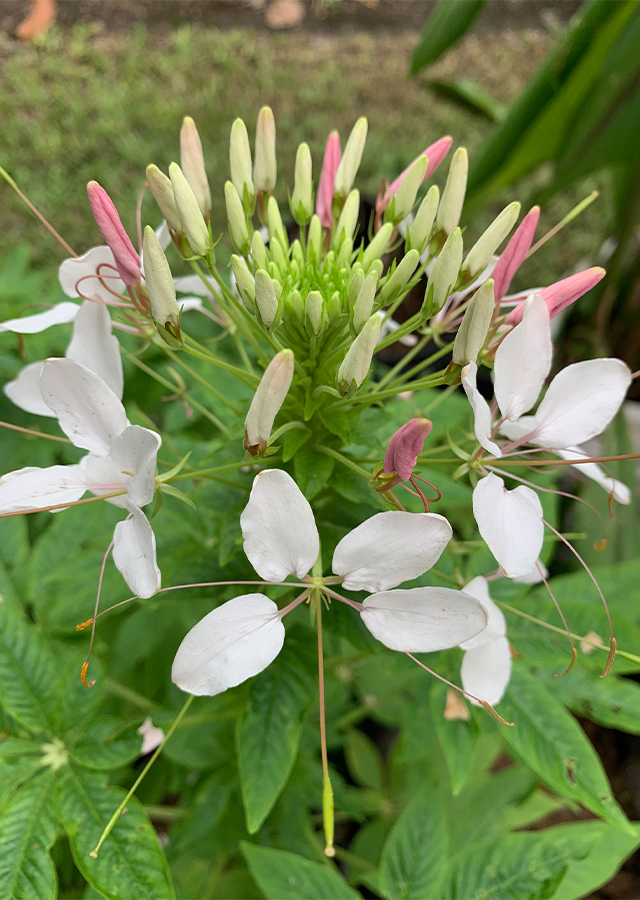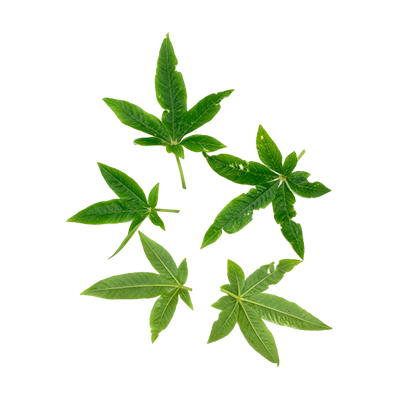Spiny Spiderflower
Cleome spinosa Jacq.
Cleomaceae
Location in our garden
Principal



Synonym
Cleome erucago Mill.
Cleome heptaphylla L.
Cleome pubescens Sims
Habitus
Herbaceous. Woody, highly perfumed annual or biennial herbs that grow 50-120 cm tall.
Part Used
Leaves
Flowers
Roots
Stem
Growing Requirements
Full Sunshine
Habitat
Riverbanks
Shrublands
Grassland
Overview
Spiny spiderflower is native to South America, and introduced to Central and North America, South and small part of East and South East Asia also to Africa. It is frequently grown in gardens, and occasionally escapes in Southern New England. A rather showy plant, it is commonly grown as an ornamental in warm climate.
Vernacular Names
Alafe-mar Khardar (Arab), Zui die huo (Chinese), Kleopatra nadel (German), Zui die huo (Chinese), Mussambe-de-espino (Brazilian), Botete (Phillipines).
Agroecology
In full sun, Cleome flowers grow best, as shady conditions will make them grow so tall as to overturn. Higher-than - normal temperatures are needed for Cleomes. For optimal germination, fluctuating day/night temperatures are indispensable.
Morphology
- Stem - erect, branched, branches slender, grandular pubescent with translucent coarse hairs.
- Leave - large, 5-7-foliolate; leaflets oblong-lanceolate, up to 10 cm long and about 2-3 cm wide.
- Flowers - bisexual, zygomorphic, white to creamy yellow or pinkish rarely, about 1-2 cm across, pedicel filiform, slender, about 3-25 mm long, sepals 4, equal, ovate-obovate, valvate, free or slightly fused at the base.
Cultivation
Propagation is by seed. Seed leaves spoon-shaped. True leaves palmately-lobed. Seeds sowed outdoors germinate in 28-45 days
Chemical Constituents
Terpenes, steroids, phenolic compounds (phenylpropanoid and coumarin), flavonoids, chacona, 7-α-hydroxy manool, Incensole dan sclareool. Stems, leaves and fruits: (Z)-phytol, integerrimine and incensole.
Traditional Medicinal Uses
Medicinal Uses
- The innovation uses the extract of Cleome spinosa as an active ingredient for the extension of hair follicle growth.
- It is used as an antinociceptive / anti-inflammatory agent.
- Its volatile oil displayed mild action against seven of the eight strains of bacteria used.
- Antimicrobial activity against Gram-positive bacteria (S. aureus and B. subtilis), Gram-negative bacteria (E. coli and P. aeruginosa) and fungi (C. albicans, C. glabrata, and C. krusei) was demonstrated in the methanolic leaf extract sample.
- The in vitro antimicrobial ability and phytochemical composition of roots and extracts of leaves were evaluated in the analysis.
Traditional Uses
- For headaches, bruised leaves are applied to the scalp.
- Plant is a stomachic; as a vulnerary, used in Brazil.
- It is used in Northeastern Brazil for the treatment of respiratory tract diseases. Leaf and flower syrups and infusions are used for fever, pneumonia, cough, bronchitis , and asthma. The whole plant is used for digestive and healing effects.
- Grain oil, which is used for earaches.
Part Used
Reference Sources
- StuartXchange. (2015). Phillipine Mediicinal Plants. BoteteCleome spinosa Jacq. http://stuartxchange.com/Botete.html. 25-10-2020.
- Biodiversity India. (No date). India Biodiversity Portal. Cleome spinosa Jacq.. https://indiabiodiversity.org/species/show/263044. 25-10-2020.
- National Park. (No date). Flora & Fauna web. Cleome hassleriana Chodat. https://www.nparks.gov.sg/florafaunaweb/flora/3/3/3313. 25-10-2020.
- Flora Of Pakistan. Cleome spinosa. http://www.efloras.org/florataxon.aspx?flora_id=5&taxon_id=200009173. 25-10-2020.
- Fern, Ken. (2014). Useful Tropical Plants. Cleome speciosa. http://tropical.theferns.info/viewtropical.php?id=Cleome+speciosa. 03-11-2020
- Plant of The World Online. 2021. Cleome spinosa. https://powo.science.kew.org/taxon/urn:lsid:ipni.org:names:60589-2


